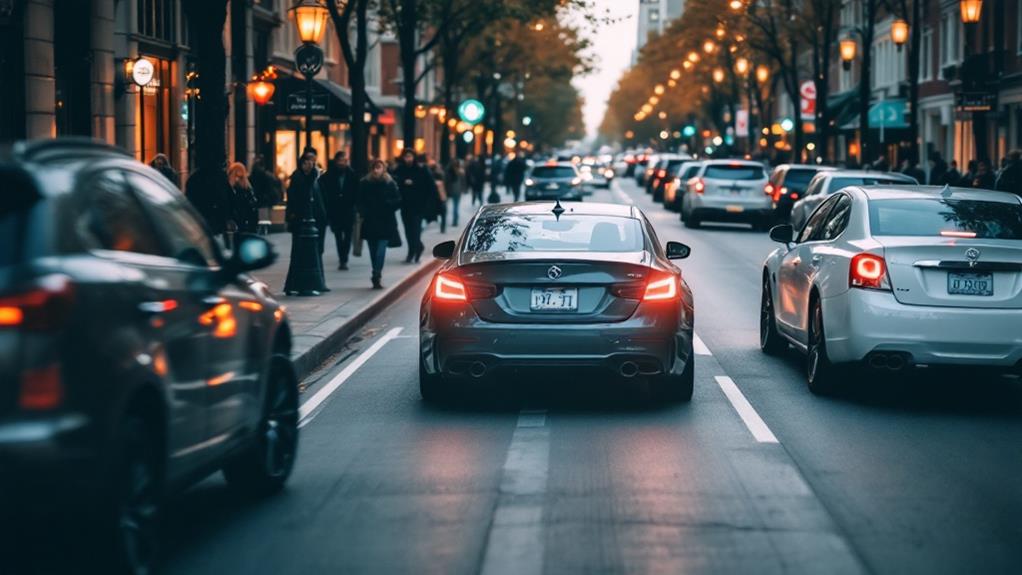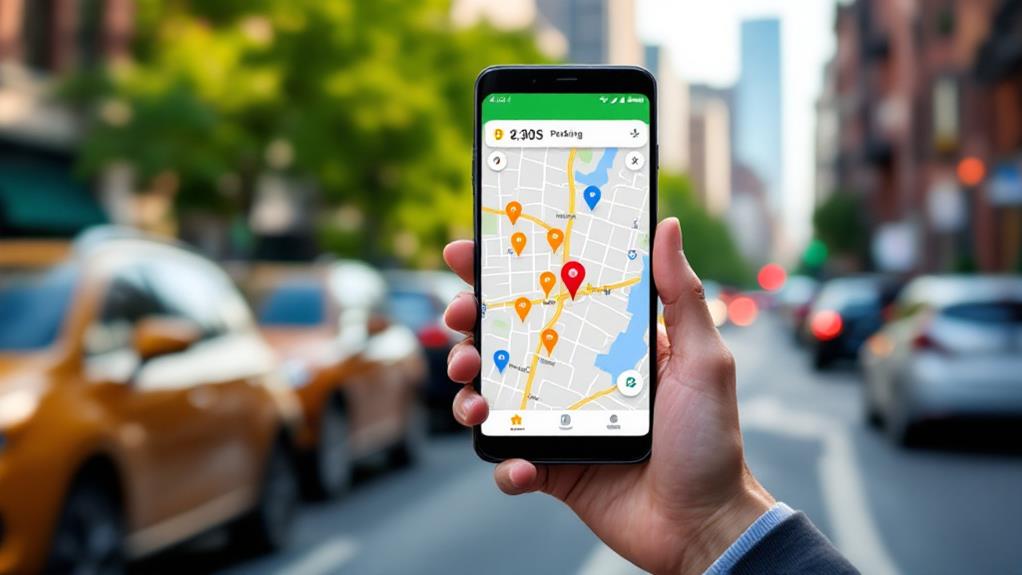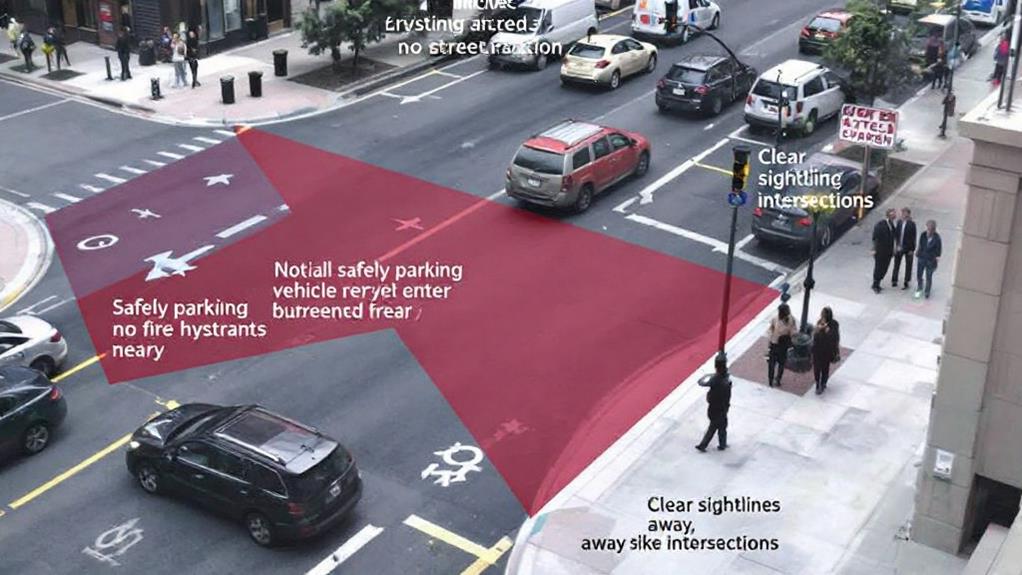How to Protect Your Car From Damage When Street Parking
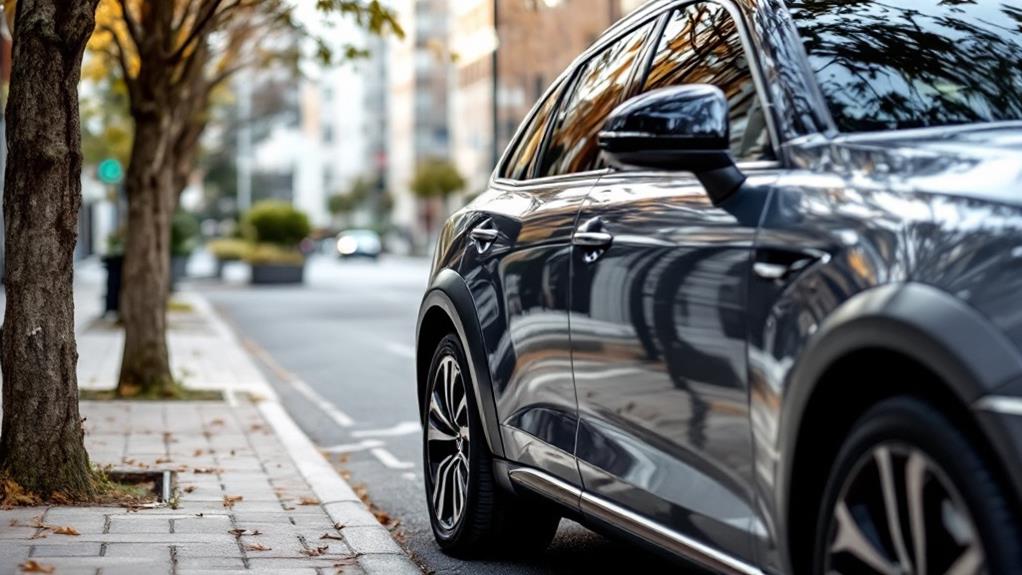
To protect your car when street parking, choose spots wisely, opting for well-lit areas away from trees and high-traffic zones. Always lock your vehicle and use visible deterrents like steering wheel locks. Invest in protective accessories such as car covers and sunshades. Be mindful of your surroundings, avoiding areas prone to debris or criminal activity. Maintain regular cleaning and waxing to safeguard your car's exterior. Practice careful parking techniques, leaving ample space between vehicles. Stay aware of weather conditions and local parking regulations. Consider thorough insurance coverage for added peace of mind. These strategies are just the beginning of keeping your car safe on the streets.
Choose the Right Parking Spot
Where you park your car can make a significant difference in protecting it from damage. When street parking, choose your spot wisely to help safeguard your vehicle. Park in the first or last spot on the street to avoid being boxed in, making it easier to maneuver out even during busy times. Corner spots are perfect as they reduce the risk of bumper damage from people trying to squeeze into tight spaces.
To enhance car safety, opt for well-lit areas under streetlights. This deters thieves and vandals, making your car less of a target. However, avoid parking under trees, as falling debris, bird droppings, and tree sap can cause significant damage over time.
Consider investing in a car cover to keep your vehicle protected from environmental factors when parked for extended periods. Additionally, familiarize yourself with local parking regulations and investigate options like residential parking permits or mobile parking apps to make your street parking experience smoother.
Secure Your Vehicle Properly
After selecting the ideal parking spot, it's time to focus on properly securing your vehicle. Always engage your car's alarm system and double-check that all doors and windows are securely closed. This basic step is essential in deterring potential thieves.
For added protection, use a steering wheel lock or an immobilizing device. These visible deterrents can make your car less attractive to criminals. Don't forget to remove all precious items from plain sight, or better yet, take them with you. If you must leave items in the car, consider using a locking car cover to conceal the contents.
Whenever possible, park in well-lit areas near open businesses. This increases visibility and reduces the likelihood of criminal activity. Remember, a clean and well-maintained car is less likely to be targeted. Regularly wax and clean your vehicle's exterior to protect the paint and finish from environmental damage.
Use Protective Accessories
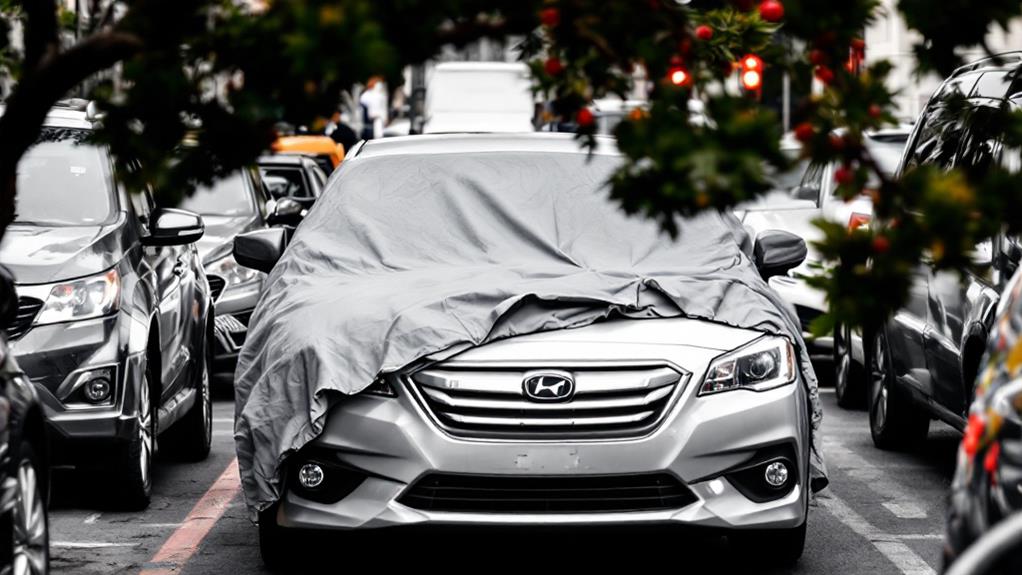
In addition to securing your vehicle, using protective accessories can substantially enhance your car's defense against damage and theft when street parking. Car covers are an excellent investment, shielding your vehicle's exterior from sun damage, weather elements, and debris. They can also deter vandalism and offer additional security features like locking mechanisms.
Windshield sunshades are another essential accessory, blocking UV rays and reducing heat buildup inside your car. This helps preserve your interior, preventing fading and cracking of the dashboard and upholstery. For added protection against theft, consider installing catalytic converter shields. These can cost between $120 and $480, depending on your vehicle model, but they're an effective deterrent against thieves targeting this crucial component.
If you own a truck, aftermarket tailgate locks are a wise choice. For around $25, you can secure your truck bed and prevent expensive tailgate theft. Ultimately, wheel locks can slow down potential wheel thieves by replacing one lug nut with a keyed lock. However, be aware that they may cause inconvenience if you lose the key, especially during a flat tire situation.
Be Mindful of Surrounding Elements
Being mindful of your surroundings is crucial when street parking your car. When choosing a spot, avoid parking under trees to protect your paint job from bird droppings, fallen branches, and tree sap. These elements can cause considerable damage to your vehicle's exterior, especially when combined with acid rain.
Steer clear of construction sites to minimize the risk of debris damaging your car or puncturing your tires. Additionally, avoid alleys and driveways with limited clearance to prevent accidental side damage from other vehicles or structures. Choose spots away from high-traffic areas to reduce the chances of being hit by passing cars or bicycles.
To protect your car from theft and vandalism, opt for well-lit areas near open businesses. These locations are often safer and provide more visibility, deterring potential criminals. By being aware of your surroundings and choosing your parking spot wisely, you'll greatly reduce the risk of damage to your vehicle. Remember, taking a few extra moments to assess the area can save you from costly repairs and headaches in the long run.
Maintain Regular Vehicle Cleaning

Regular vehicle cleaning is essential for protecting your car when street parking. To prevent damage from environmental contaminants, wash your car at least every two weeks. This routine helps remove harmful substances like bird droppings, tree sap, and road grime that can harm your car's paint and finish.
Don't forget to protect your car's exterior by applying a high-quality wax or paint sealant every three to six months. This extra layer of protection shields your vehicle from the elements and maintains its shine, even when exposed to harsh outdoor conditions while parking.
Pay attention to your car's interior as well. Use a leather conditioner regularly to keep upholstery supple and prevent cracking or fading from UV exposure, which can be particularly damaging when parking in sunny areas.
If you notice any spotted damage, such as bird droppings or tree sap, treat it immediately to avoid permanent staining or etching of the paint. Finally, don't neglect your car's underside and wheel wells. Regularly inspect these areas to address any rust or corrosion before it worsens, especially if you frequently park in areas with road salt or moisture.
Install Anti-Theft Devices
Security is paramount when street parking your vehicle. To protect your car from theft and damage, consider installing various anti-theft devices. These not only deter potential thieves but can also qualify you for insurance discounts.
Start with the basics:
- Steering wheel locks and brake locks are visible deterrents that make it difficult for thieves to drive away with your car.
- Engine immobilizers prevent hot-wiring, adding an extra layer of security.
- GPS tracking devices allow you to monitor your vehicle's location, aiding in recovery if it's stolen.
- Catalytic converter shields protect this precious component from theft, as it contains valuable metals.
Don't stop there. Wheel locks can prevent tire and wheel theft, while advanced anti-theft systems like engine cut-off switches add another obstacle for would-be thieves. Vehicle tracking systems not only help locate your car but can also qualify you for insurance discounts.
Practice Careful Parking Techniques
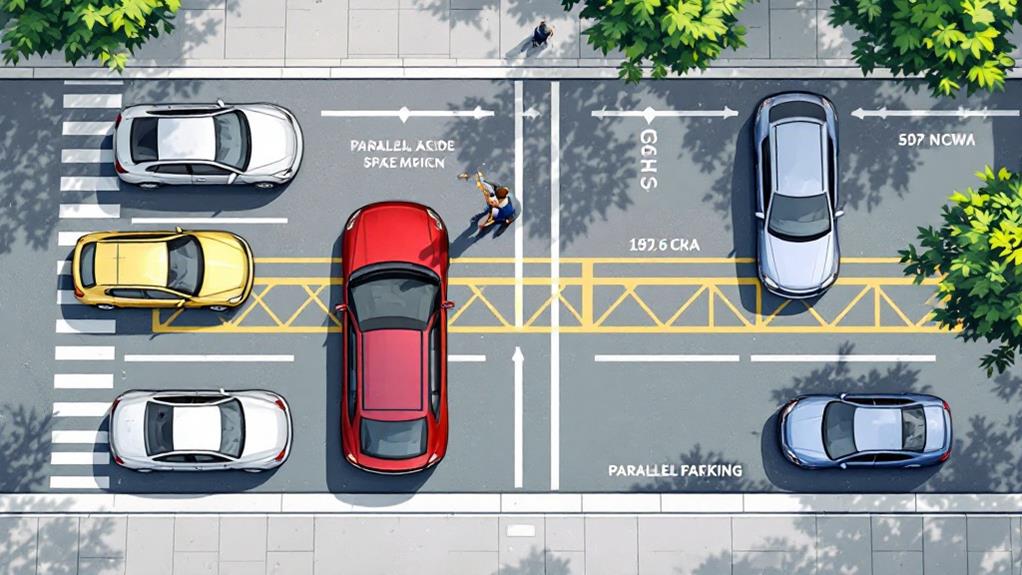
Careful parking techniques can substantially reduce the risk of damage to your car when street parking. When you're parked on the street, it's indispensable to master parallel parking to avoid scraping nearby vehicles or the curb. Always aim to position your car about 6-12 inches from the curb every time you park. This distance helps protect your wheels and tires from curb damage while still allowing enough space for passing traffic.
Before selecting a parking spot, look closely at the surrounding area. Try to park near well-lit areas or security cameras to reduce the risk of theft or vandalism. Avoid parking under trees, which can drop sap or branches onto your car. Be aware of parking restrictions and time limits to prevent tickets or towing.
When leaving your car, double-check your distance from other vehicles and objects. Take a moment to guarantee you're not blocking driveways or fire hydrants. If possible, choose a spot with ample space on both sides to minimize the chances of minor damage from car doors or passing vehicles. By practicing these careful parking techniques, you'll drastically reduce the likelihood of damage to your vehicle while street parking.
Monitor Weather Conditions
Weather awareness is crucial when street parking your car. Keeping an eye on weather forecasts can help you protect your vehicle from potential damage caused by severe conditions like hail, heavy rain, or high winds. When possible, park in a garage or covered lot during dangerous weather events to shield your car's exterior from weather-related hazards.
If you can't find covered parking, consider using a quality, weather-resistant car cover to protect your vehicle. Look for covers with reinforced designs that can withstand heavy snow loads and prevent damage from accumulation.
When street parking during inclement weather, follow these precautions:
- Check your car periodically to clear snow, ice, or debris that could build up
- Position your vehicle away from trees or structures that might fall during high winds
- Angle your car to minimize exposure to hail or driving rain
- Use windshield wipers in the raised position to prevent freezing to the glass
Understand Local Parking Regulations
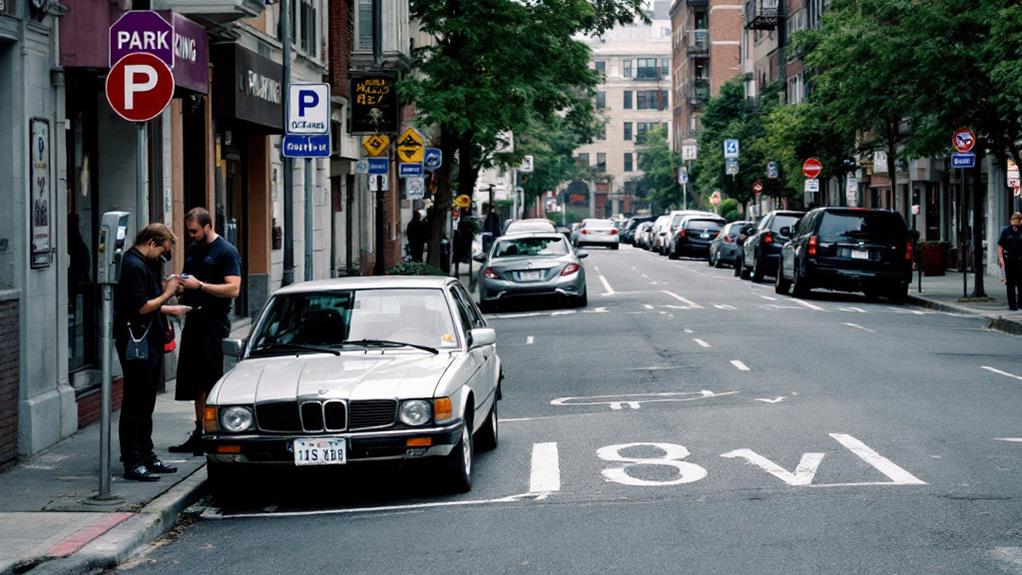
Maneuvering the maze of local parking regulations is essential for safeguarding your car from potential fines, towing, or damage. To protect your parked car and avoid parking tickets, research your city's restrictions, including time limits and alternate-side parking rules. Stay informed about parking schedules and street sweeping dates through the city website or mobile apps.
Always be vigilant of posted signs and markings indicating legal parking areas and time limits. Familiarize yourself with local enforcement policies, as some cities have strict towing practices. Employ available resources like online maps to identify secure parking options before reaching your destination.
While busy streets may seem safer, secluded side streets can sometimes offer better protection from thieves. Regardless of where you park, make sure to engage your emergency brake and read your owner's manual for specific tips for car safety when parking.
Consider Insurance Coverage Options
While understanding parking regulations is key, protecting your car extends beyond following rules. When street parking, extensive auto insurance is your best defense against theft or vandalism and damage incurred from accidents or natural disasters. You'll want to examine these coverage options:
- Collision and comprehensive coverage: These protect you if your car is damaged or stolen, helping pay for repairs or replacement.
- Roadside assistance: Often included in policies, this service can be a lifesaver if your car keys are lost or your vehicle becomes disabled on side streets.
- Uninsured/underinsured motorist coverage: This safeguards you against hit-and-run incidents or accidents caused by drivers without adequate insurance.
- Anti-theft device discounts: Installing security features makes theft less likely and may qualify you for lower premiums.
